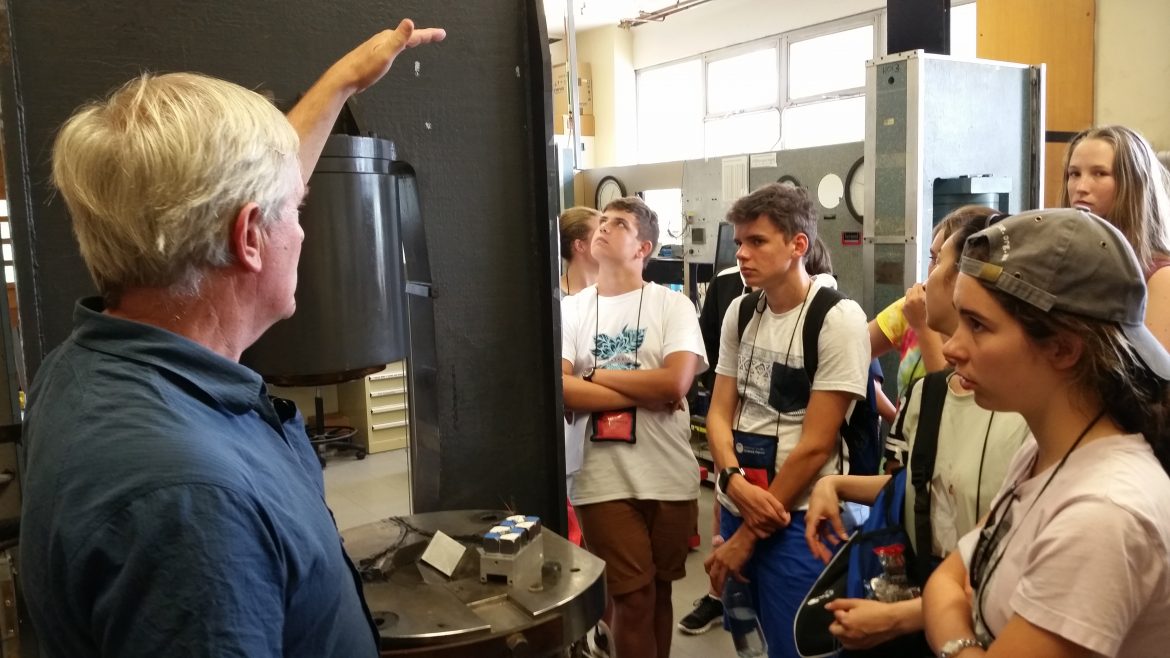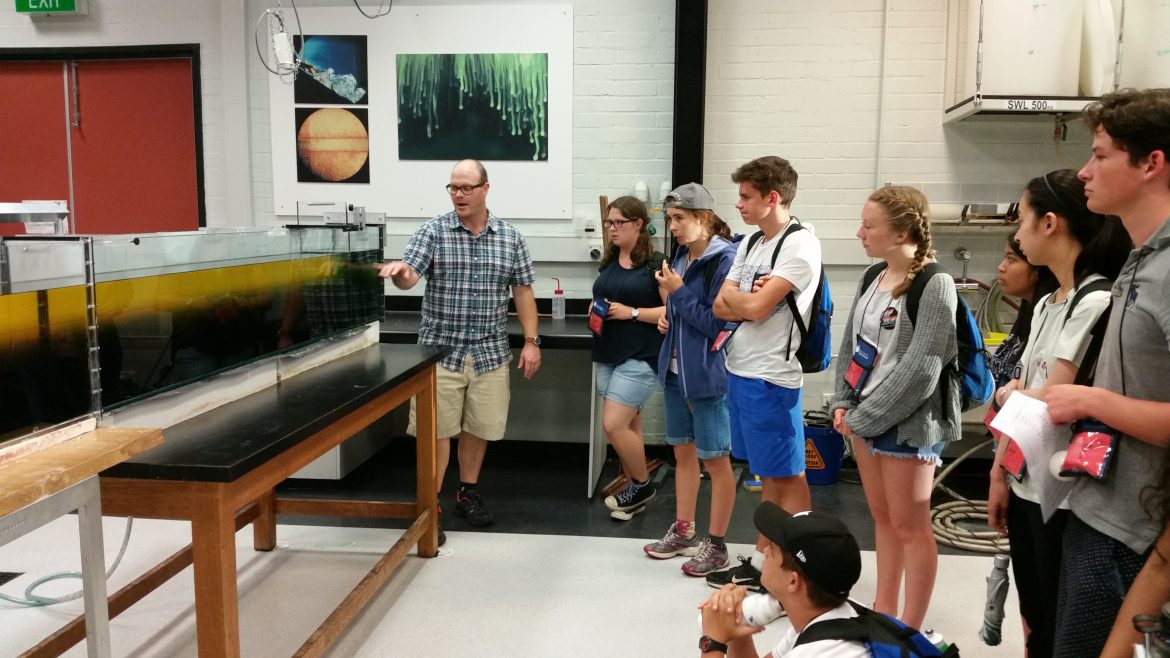An obvious pun, but it had to be done...
Earth and Environmental Science Group Darwin visited the ANU Research School of Earth Sciences, to get a good look at the many areas of research that the school covers. As an introduction, the group heard the 3-Minute-Thesis speeches of three different post-graduate students - their captivating talks demonstrated the how vast earth science research fields are.
Next the group visited the SHRIMP - the Sensitive High-Resolution Ion Microprobe - used to determine ion ratios in geologic materials. Liane Loiselle, a PhD candidate, talked to the group about the process of radiometric dating, showing the equipment and a range of samples, the oldest of which was a meteorite that predates the earth itself. Liane discussed at length the benefits of uranium-lead dating, including a dice experiment to demonstrate decay rate, before the group participated in a timeline activity. Using both real samples and props, participants placed dinosaurs, trilobite fossil, and the meteorite (to name a few) along a roll of paper where each square equalled 10 million years.
Next was a tour of Professor Greg Yaxley's lab, and the experiments he works on. Professor Yaxley’s field is experimental petrology, which focuses on the origin, structure, and composition of rocks. In his work, he recreates the conditions in the earth's crust using complex machinery, to create samples similar to those found thousands of kilometres below our feet.
After leaving Professor Yaxley’s lab, the group received a brief presentation on seismology from Dr Michelle Salmon. The participants discussed the world seismic monitor, which looks at recent worldwide earthquake activity, before they used the seismograph installed in the room to simulate an earthquake with a group jump, showing the magnitude on the screen.

Professor Yaxley explaining how they create the conditions in the earth's crust
Finally, the group visited the Geophysical Fluid Dynamics ‘Wet Lab’, which researches fluid flow problems on earth, including ocean circulation and ice melting due to climate change, among others. The group firstly conducted an experiment to show the effect of gravity currents, mixing salt into a portion of water and watching it interact with fresh water when released. This was repeated with different water sodium levels in a larger tank, before the group got a look at the new rotating table machine that models the currents of the southern ocean, and holds a lot of promise for future research.

In the Geophysical Fluid Dynamics ‘Wet Lab'
To have a look at that research, and everything the Research School of Earth Sciences is up to, have a look at their website: rses.anu.edu.au.
Meg Stegeman, Communications Intern NYSF 2017 Session C and NYSF Alumna 2014